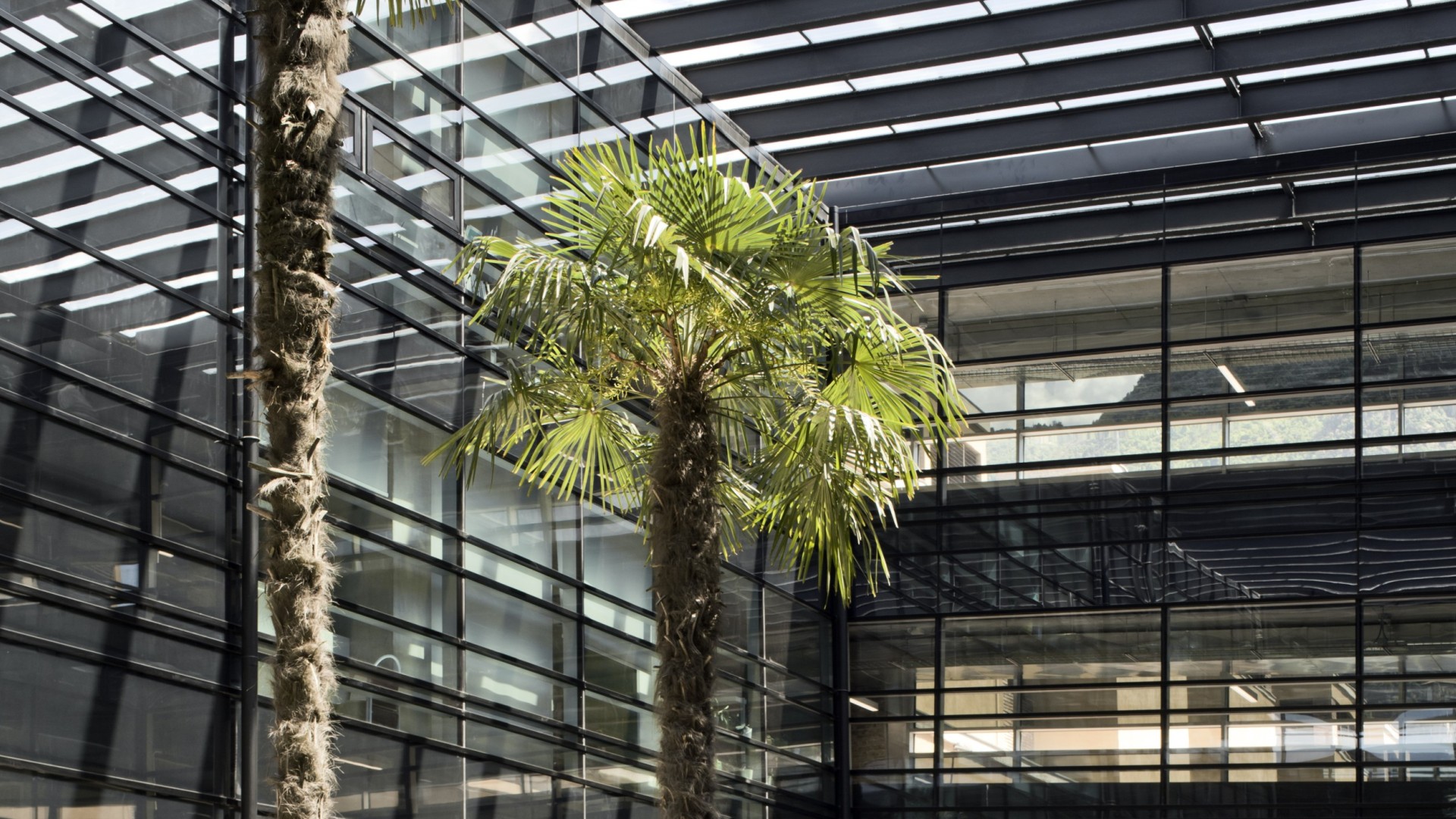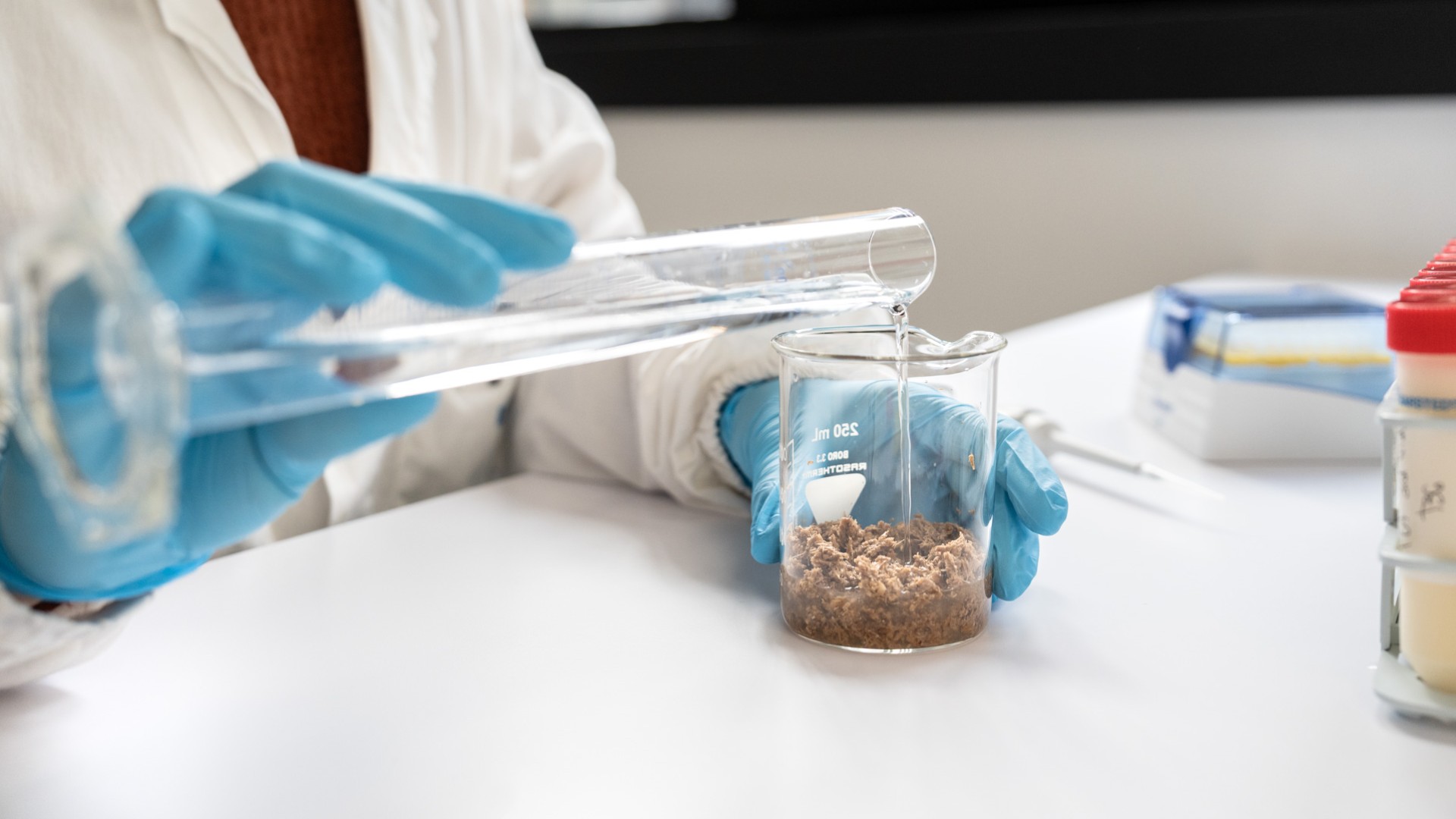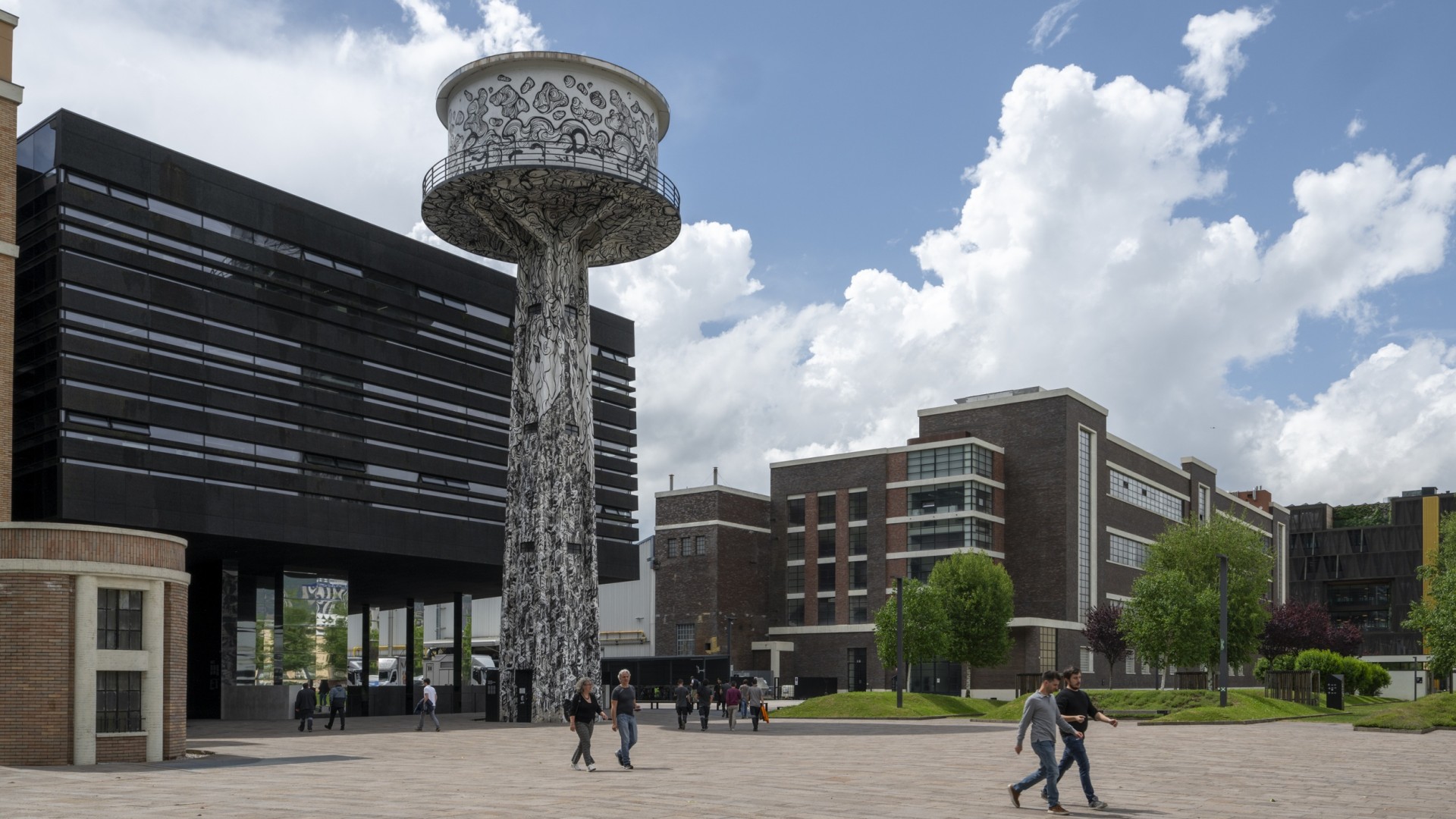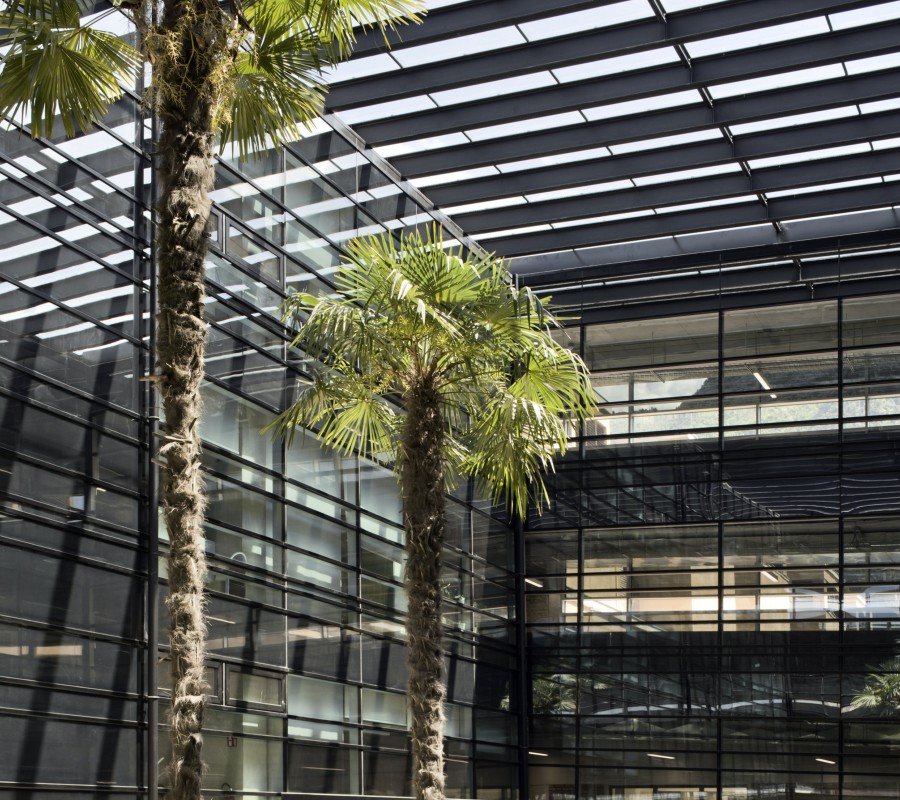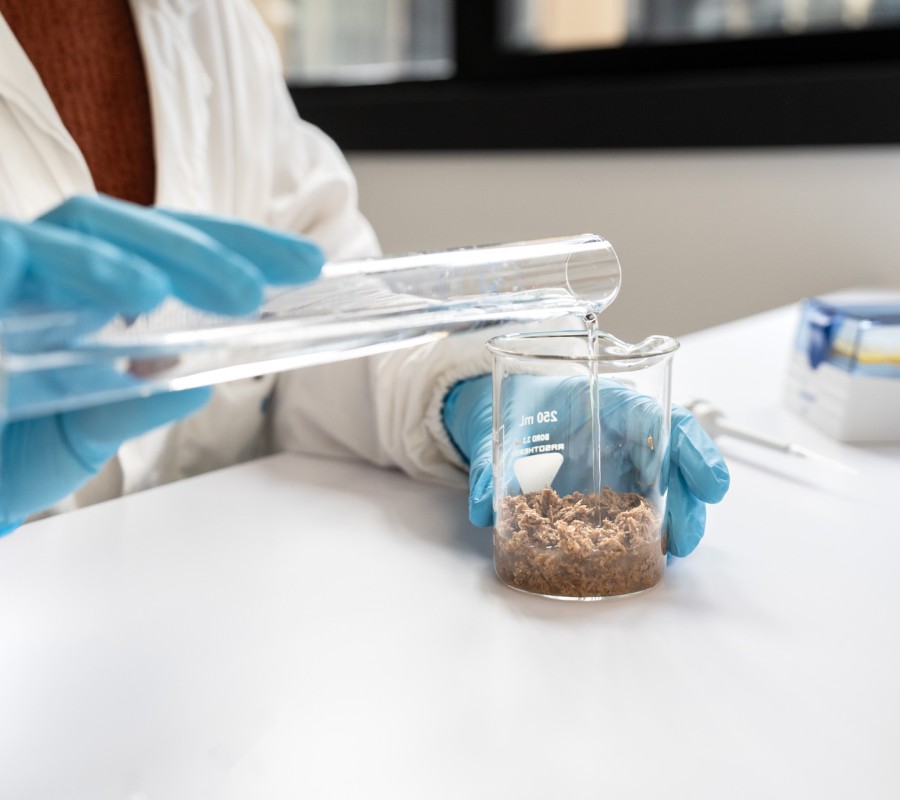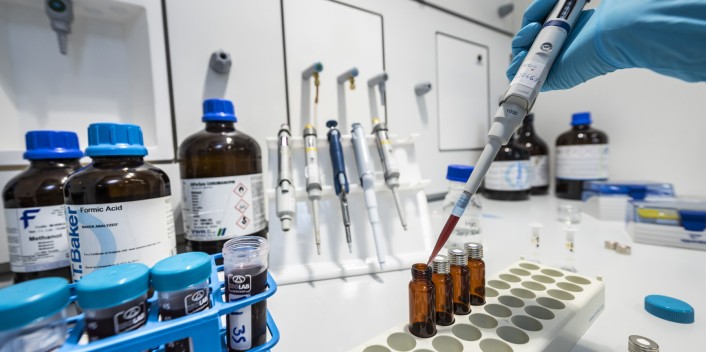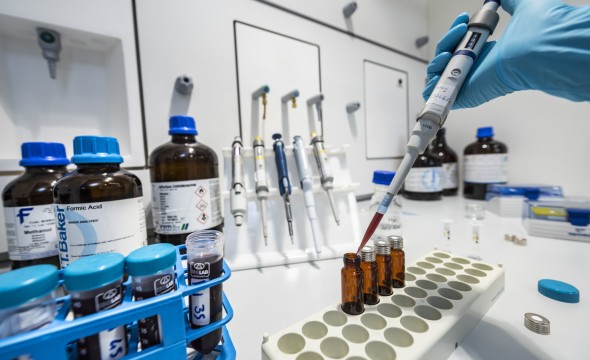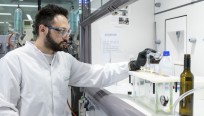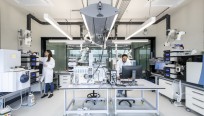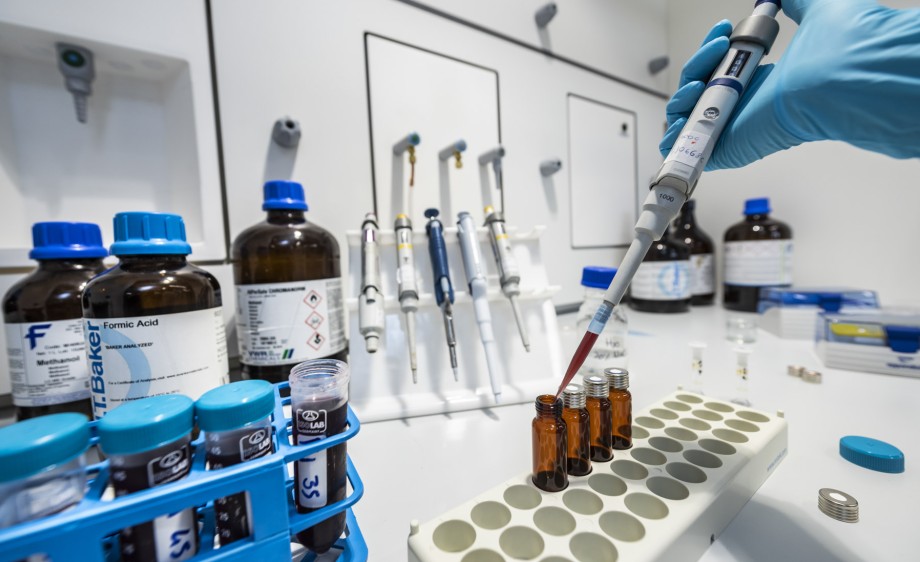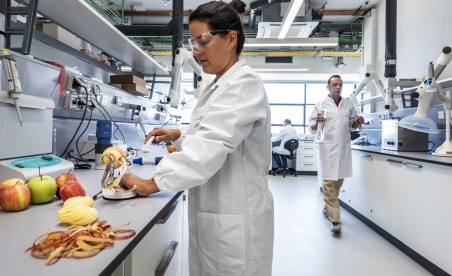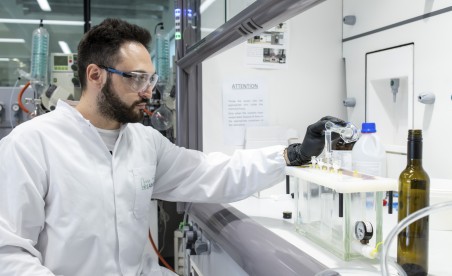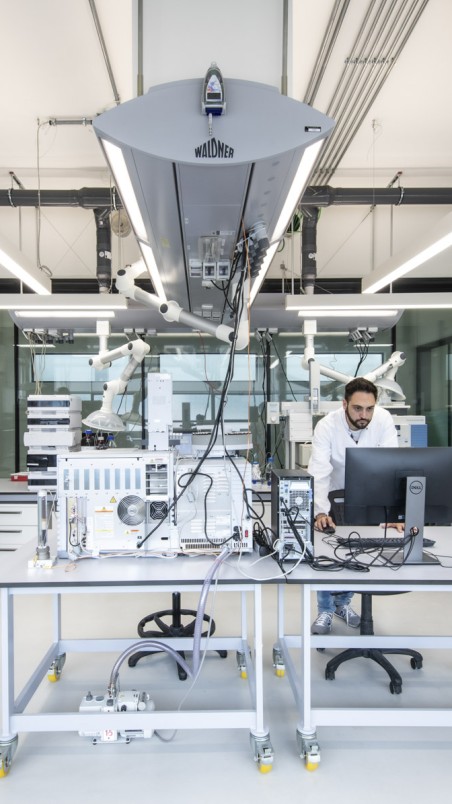Everything you need to know as a company
For food with substance and flavour
We identify and quantify the natural contents of raw materials and products.
In this laboratory, we have two goals: improving food quality and plant health. To this end, we identify and quantify the flavours, vitamins and polyphenols that naturally occur in agricultural products (apples, apple juice, grapes, wine, cheese, milk) and plant components (leaves, roots, wood). We have found gas, liquid and ion chromatography, near-infrared spectroscopy and high-resolution mass spectrometry to be the most effective analytical methods.
Gas chromatography: analysing volatile aromas and fatty acids.
In gas chromatography, the compounds to be tested are separated at elevated temperatures (50°C - 250°C) on a thin separation column and analysed with a suitable detector. These detectors include mass spectrometers (MS) and flame ionisation detectors (FID). Using these techniques, volatile compounds such as apple and wine flavours, as well as esterified fatty acids from dairy and cheese products, can be quantitatively determined.
Liquid chromatography: analysing polyphenols and vitamins.
Using liquid chromatography, the compounds to be analysed are separated on a separation column using solvent mixtures and then measured with suitable detectors, including mass spectrometers (MS) and diode array detectors (DAD). Using this procedure, non-volatile ingredients such as polyphenols in wine, grapes and apples, as well as vitamins in apples and juices, can be measured.
Go to website
Your advantage
We research plant health to improve food quality. Gluten-free products are one example.
The core tools
Gas, liquid and ion chromatography, near-infrared spectroscopy and mass spectrometry: take your pick.
Our services
We research the complete chemical profile of beverages and foods. This is also an open lab, which means you can conduct your own analyses – if you wish.
